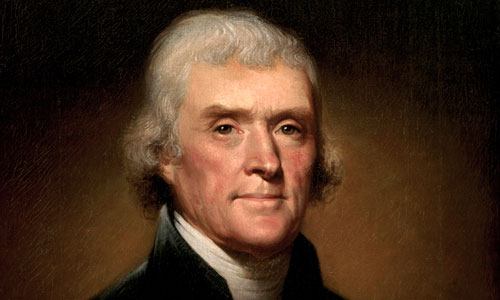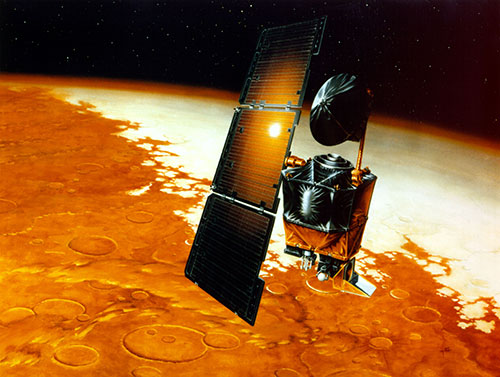Who Keeps the Metric System Down? We Do
The metric system may be popular nearly everywhere else in the world, but it's failed to win over the Americans. Here's why.

Thomas Jefferson, Ronald Reagan, and the metric system’s American politicization
Admittedly, my mockery of the metric system is a bit exaggerated—seriously, it’s not that bad—but the truth of the matter is that the metric system really seems to inexplicably rile people the heck up.
It should be noted, in fact, that we almost went with centimeters instead of inches right near the beginning, only to change course due to a lack of funding to do so. Ever since George Washington made the argument in 1790 that the U.S. needed to be on a standard measurement system, the metric system had been eyed.
Thomas Jefferson, who had actually come up with his own system of measurements, got relatively close to pitching a metric-like system, but it wasn’t approved by Congress. Instead, we eventually ended up going with an Americanized form of the British system, which used feet and pounds and all those other things.
But in the 1970s, real efforts towards metrication took hold in the United States, with presidents Gerald R. Ford and Jimmy Carteradvocating for the shift to the then-burgeoning world standard. The problem was that politicians of the era were given a centimeter, and they took a kilometer. Ford and Carter are not remembered as two of our best presidents, and a good part of the reason for this probably has to do with the overly aggressive approach they took to the metric system, which drove political critics crazy.
Two guys, one dream to kill the centimeter
One of those critics, a former NPR president named Frank Mankiewicz, just happened to be well-connected politically, and he happened to have a friend who was working with as Ronald Reagan’s press secretary, Lyn Nofziger. After Reagan got in office, he gave Nofziger a little nudge that helped keep the metric system down:
So, during that first year of Reagan’s presidency, I sent Lyn another copy of a column I had written a few years before, attacking and satirizing the attempt by some organized do-gooders to inflict the metric system on Americans, a view of mine Lyn had enthusiastically endorsed. So, in 1981, when I reminded him that a commission actually existed to further the adoption of the metric system and the damage we both felt this could wreak on our country, Lyn went to work with material provided by each of us. He was able, he told me, to prevail on the president to dissolve the commission and make sure that, at least in the Reagan presidency, there would be no further effort to sell metric.
It was a signal victory, but one which we recognized would have to be shared only between the two of us, lest public opinion once again began to head toward metrification.
So the reason we generally don’t use the metric system in the U.S. basically has everything to do with two well-connected guys who had just enough power to stone-cut their way through something they didn’t like.
In 2012, Mankiewicz was asked about this effort on Reddit, to which he said that “I just think it’s too disruptive, requiring too much sudden change, not only in numbers but in language—especially in sports—and mostly for the benefit of the manufacturers of equipment, tools and kitchen appliances.”
But with Mankiewicz having died last year, perhaps Chafee and the rest of the pro-metric illuminati see their opportunity … finally.
“It’s inevitable that the U.S. will be on the metric system someday. It’s already heading in that direction and it’s not going to turn back around.”
— University of South Carolina mathematics professor Don Jordan, arguing that the United States will eventually go metric once and for all. Jordan is a senior member of the U.S. Metric Association, so of course he’s gonna say that, even after facing a metric ton of resistance! And of course, the metric advocates love freaking Chafee.

That time NASA lost a space probe because of a conversion error
Despite the efforts by Mankiewicz and other anti-metric critics, it never fully faded away, and in fact within the federal government had seen some major uptake.
The inconsistencies, however, have never really faded from view. Every once in a while, an embarrassing conversion error pops up—an embarrassingly costly one, that is. Plenty have been embarrassing, but none have been as costly, perhaps, as the loss of the Mars Climate Orbiter, a space probe that NASA worked on with defense contractor Lockheed Martin.
When the probe entered the Martian atmosphere in September 1999, everything went wrong when it became clear that the software that Lockheed Martin used to program the system was in English units, despite a requirement in the contract which required the system to work in metrics, which NASA’s Jet Propulsion Laboratory used.
The result was that this $125 million hunk of metal disintegratedwhen it reached the Martian atmosphere, because it got too close to the surface due to some faulty calculations.
“Our inability to recognize and correct this simple error has had major implications,” Jet Propulsion Lab director Edward Stone said of the incident in a NASA news release.
Even with the scope of the mistake—people are fired for a lot less—the space agency didn’t end up firing anyone. They just admitted they screwed up and need to do a better job next time.
“People sometimes make errors,” NASA’s Dr. Edward Weiler added. “The problem here was not the error, it was the failure of NASA’s systems engineering, and the checks and balances in our processes to detect the error. That’s why we lost the spacecraft.”
Perhaps if they hadn’t used the metric system, they would’ve prevented the mistake.
17
Now here’s the thing about the metric system: It has plenty of uptake in a number of important places. For one thing, it’s how we measure nutrients on our food. And while Coke and Pepsi may still be going at it, one place they agree is that the two-liter bottle is worthy of a place at the table.
But maybe the real solution here is that we accept both systems rather than choosing one over the other. That’s the recommendation, at least, of the National Institute of Standards and Technology’s Patrick D. Gallagher, who wrote a response to a White House petition on the issue back in 2013.
“Ultimately, the use of metric in this country is a choice and we would encourage Americans to continue to make the best choice for themselves and for the purpose at hand and to continue to learn how to move seamlessly between both systems,” Gallagher wrote.
The pro-metric illuminati might have a hard time fighting that argument.
:format(jpeg)/2018/04/cqq9dhx8cgxevtiwiyyy--1-.gif)
/2018/04/cqq9dhx8cgxevtiwiyyy--1-.gif)

/uploads/ernie_crop.jpg)